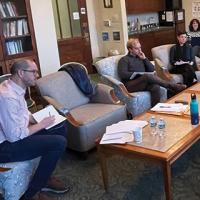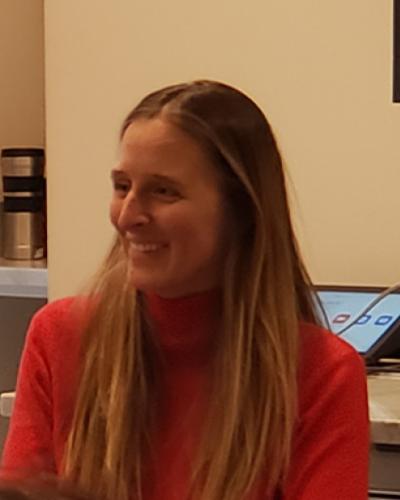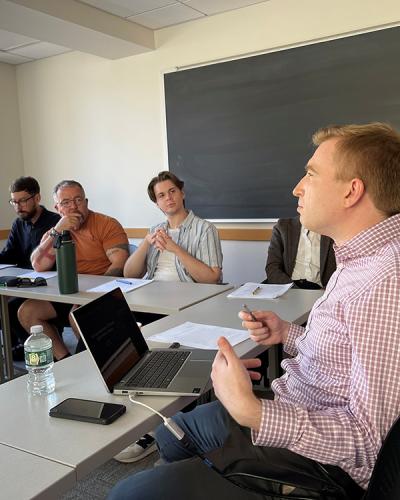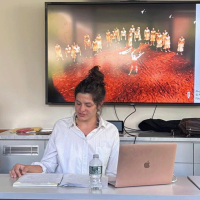Ulrike Vedder: “Auswandern - Heimkehren - Verschellen: Liminales Erzählen und die Kunst des Handelns in der Auswandererliteratur des 19. Jahrhunderts”
Friday, September 1, 2023 in Ithaca, New York
On a sunny early fall afternoon in Ithaca, Ulrike Vedder, professor of neuere deutsche Literatur at the Humboldt Universität zu Berlin and co-editor of the Zeitschrift für Germanistik, held a much-awaited and well-attended colloquium presentation. Her paper on narrative liminality in literature and guidebooks focused on immigration from Germany to the United States during the nineteenth century.
In her opening remarks, Professor Vedder provided the audience with an overview of the paper’s research questions, sources, theoretical approaches, and methodologies. She briefly noted how she had borrowed the term “liminality” from the field of ethnology to discuss textual and literary phenomena and highlighted the liminal subject and liminal narration as the key concerns of her paper. She went on to define the three phases constituting liminality: 1) departure from a country; 2) entrance into a phase of liminality; and 3) reintegration into a country. Professor Vedder noted that the second phase of liminality is a particularly productive field for literary analysis as it opens up spaces of transgression and in-betweenness. Furthermore, she brought into play the materiality of document types that are linked to states of liminality, describing them as media that overcome the limits of death through their testamentary function.
In order to illustrate differences in genre expectations between immigration narratives in literature and guidebooks, Vedder relied on Michel de Certeau’s Die Kunst des Handelns, noting the speech-act function of giving advice in liminal situations, not without emphasizing that de Certeau takes a stance against the textual genre of the guidebook while pursuing an interest in narrative function. Vedder examined the questions of how subjects act and strive to make space their own, and how immigration thus amounts to a type of subversive action.
In terms of methodology, Vedder briefly described how she approached the project in reverse chronological order, working her way back in time from contemporary authors such as Emine Sevgi Özdamar, to twentieth-century “exile literature,” including Gabriele Tergit, to the works from the nineteenth century featured in her paper. Furthermore, Vedder underscored the relevance of the project’s temporal and topical scope by noting that the genre of immigration narratives was widely popular in the nineteenth century, both in the form of literature and reference books, and that immigration narratives were highly influential in forming the European imagination of the United States at the time. In her conclusion, Vedder reiterated the central topics of her wide-ranging paper: chronotopes, guidebooks, and literary characters who are or, as the case may be, are not defined by their return home.
The lively discussion that followed addressed genre issues; questions concerning the readership of the wide range of texts that deal with emigration/immigration, homecoming, and liminality; and the specific subject positions inscribed in them. When the question concerning the historical origin of immigration literature was posed, Professor Vedder noted that it was in fact the initial appearance of the immigration guidebook genre in the 1920s which had determined the course of her investigation as well as her choice of textual sources. With regards to subject position, it was noted that many narratives are told from the position of those who stay behind rather than the migrants, Kafka’s novel Der Verschollene being a significant exception to this trend. As a rule, it would seem, the immigrant subjects in much 19th and 20th-century German literature tend not speak although they have a story to tell.





